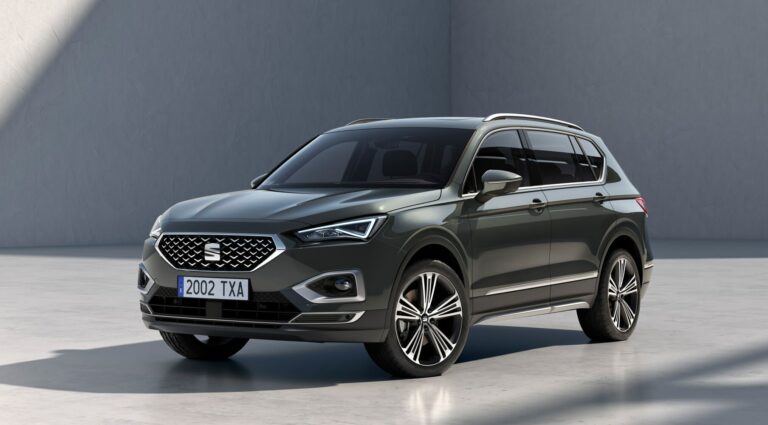Off Brand Cars: Unlocking Value Beyond the Mainstream
Off Brand Cars: Unlocking Value Beyond the Mainstream cars.truckstrend.com
In a world dominated by automotive giants, where familiar logos grace every highway and dealership lot, a different category of vehicles quietly exists: the "off-brand" car. Far from being a derogatory term, "off-brand" often refers to vehicles produced by manufacturers that may not have the same widespread recognition, market share, or established dealer networks as the industry behemoths in a particular region. These cars represent a fascinating segment of the automotive market, offering unique propositions that appeal to a specific kind of buyer – one who values individuality, seeks maximum value for their dollar, or simply dares to look beyond the conventional.
This comprehensive guide will delve into the world of off-brand cars, exploring what defines them, their compelling benefits, the critical considerations for prospective owners, and practical advice for navigating this often-misunderstood segment. Whether you’re a seasoned car enthusiast looking for something different or a budget-conscious consumer seeking an unconventional path to vehicle ownership, understanding off-brand cars can open up a surprising array of possibilities.
Off Brand Cars: Unlocking Value Beyond the Mainstream
What Exactly Are "Off-Brand" Cars?
The term "off-brand" is relative and can encompass several types of vehicles. Primarily, it refers to cars from manufacturers with a smaller global footprint or limited presence in specific regional markets. For instance, a brand well-established in Asia might be considered "off-brand" in North America or Europe, and vice versa. This category also includes:
- Emerging Market Brands: Manufacturers from countries like China, India, or Southeast Asia that are rapidly expanding but haven’t yet achieved mainstream status in Western markets (e.g., some models from Chery, Geely, BYD, Tata, Mahindra, Proton, SsangYong, though some of these are rapidly gaining traction).
- Niche or Boutique Manufacturers: Smaller companies specializing in specific types of vehicles, such as high-performance sports cars, custom builds, or ultra-luxury models, often produced in limited numbers (e.g., Spyker, Koenigsegg, certain low-volume electric vehicle startups).
- Brands with Limited Distribution: Even established brands might have limited model availability or dealer presence in certain areas, making them less common.
- Rebadged or Lesser-Known Versions: Sometimes, a car might be a rebadged version of a more common vehicle, but sold under a less familiar marque.

Crucially, "off-brand" does not inherently mean inferior quality or unreliability. Many such manufacturers produce highly competitive, well-engineered vehicles that meet stringent international safety and quality standards. The distinction often lies in marketing budgets, historical market penetration, and the breadth of their service networks.
The Allure of the Unconventional: Why Consider an Off-Brand Car?
Opting for an off-brand car can be a strategic decision, driven by several compelling advantages:

- Significant Cost Savings: This is often the primary motivator. Off-brand cars typically have lower sticker prices than their mainstream counterparts, offering more features or a higher trim level for the same budget. Their depreciation curve can also be steeper initially, making them incredibly attractive as used vehicles.
- Unique Features and Value Proposition: To compete with established brands, off-brand manufacturers often pack their vehicles with an impressive array of standard features, advanced technology, or unique design elements that would cost significantly more in a premium or mainstream car. You might get a panoramic sunroof, heated seats, or advanced driver-assistance systems at a price point where mainstream competitors only offer basic trims.
- Exclusivity and Individuality: Driving an off-brand car means you won’t see another one on every street corner. For those who appreciate standing out from the crowd and expressing their individuality, these vehicles offer a distinctive alternative to the ubiquitous models.
- Niche Focus and Innovation: Some off-brand manufacturers excel in specific niches, such as electric vehicles, urban commuters, or rugged utility vehicles, sometimes offering innovative solutions or specialized capabilities not readily available elsewhere.
- Potential for Lower Insurance Premiums (Sometimes): While not always the case, if parts are less expensive or repair costs are lower, some insurance companies might offer more competitive rates. However, the opposite can also be true if data is scarce or parts are hard to source.

Navigating the Market: How to Find and Research Off-Brand Cars
Finding an off-brand car requires a more proactive approach than simply visiting your local mainstream dealership.
- Online Marketplaces and Specialist Dealers: Begin your search on major online car marketplaces (e.g., Autotrader, Cars.com, eBay Motors) but also explore niche forums, import specialists, and smaller independent dealerships that might carry less common marques.
- International Reviews and Forums: Since many off-brand vehicles are popular in their home markets, scour international automotive review sites, owner forums, and YouTube channels from those regions. You’ll find a wealth of information on long-term reliability, common issues, and owner experiences.
- Global Reliability Surveys: While often harder to find for specific lesser-known models, look for broader reliability data on the parent company if available.
- Local Mechanic Consultation: Before serious consideration, talk to independent mechanics in your area. Ask if they have experience with the brand or are willing to work on it. Their willingness and expertise are crucial.
- Thorough Pre-Purchase Inspection (PPI): This is non-negotiable. Have any off-brand car you’re considering thoroughly inspected by an independent, trusted mechanic who specializes in imports or is open to working on less common vehicles. This inspection should cover everything from mechanical health to electronics and structural integrity.
- Extended Test Drive: Spend ample time driving the car in various conditions. Pay attention to build quality, interior comfort, driving dynamics, and any unusual noises or sensations.
Key Considerations Before Buying: What You Need to Know
While appealing, owning an off-brand car comes with its own set of unique considerations that prospective buyers must weigh carefully.
- Parts Availability and Service Network: This is arguably the biggest challenge. Does the manufacturer have an official presence or a robust parts distribution network in your region? Are common wear-and-tear items easily accessible? You might rely on online international suppliers or specialty shops.
- Resale Value: Generally, off-brand cars tend to have lower resale values compared to their mainstream competitors due to lower brand recognition and smaller demand in the used market. This is a benefit if you’re buying used but a potential drawback if you plan to sell quickly.
- Insurance: Some insurance companies may have limited data on less common models, potentially leading to higher premiums or more difficulty in getting coverage. Conversely, if the car is less expensive to repair and less likely to be stolen, premiums could be lower. Always get an insurance quote before buying.
- Reliability Data and Track Record: Comprehensive long-term reliability data, such as that provided by JD Power or Consumer Reports for mainstream brands, is often scarce for off-brand vehicles. You’ll largely rely on anecdotal evidence from owner forums and international reviews.
- Safety Ratings: Ensure the vehicle has undergone and passed relevant safety crash tests from reputable organizations like Euro NCAP, NHTSA (US), IIHS (US), or C-NCAP (China). Do not assume modern safety standards are universal without verification.
- Software Updates and Infotainment: For modern cars, over-the-air (OTA) updates and infotainment system support are important. Verify how these are handled for off-brand models, especially if there’s no local official dealer.
Common Misconceptions and Realities
The perception of "off-brand" cars is often clouded by outdated stereotypes.
- Misconception: They are always unreliable.
- Reality: Quality control and manufacturing processes globally have improved dramatically. Many off-brand vehicles are built to high standards, often using globally sourced components from reputable suppliers (e.g., Bosch electronics, ZF transmissions). Reliability varies by manufacturer, just like with mainstream brands.
- Misconception: Parts are impossible to find.
- Reality: While local dealership parts might be scarce, the internet has revolutionized parts sourcing. Many components are shared across platforms or can be ordered directly from international suppliers via online marketplaces. Specialist import parts dealers also exist.
- Misconception: They are unsafe.
- Reality: Most modern vehicles, regardless of brand, must meet increasingly stringent international safety standards. Many off-brand cars achieve excellent crash test ratings in their respective markets. Always verify specific model ratings.
- Misconception: Mechanics won’t touch them.
- Reality: While some mechanics might be hesitant due to unfamiliarity, many independent shops are willing to work on less common vehicles, especially if parts diagrams and repair manuals are accessible online. Building a relationship with such a mechanic is key.
Tips for Smart Off-Brand Car Ownership
If you decide an off-brand car is right for you, here are some tips to ensure a smooth ownership experience:
- Be Proactive with Maintenance: Stick religiously to the maintenance schedule. Even better, consider more frequent fluid changes or checks, especially in the initial years, to catch potential issues early.
- Identify Parts Sources Early: Before you even need them, research where to buy common consumables (oil filters, air filters, brake pads) and potential wear items for your specific model. Keep links to online international suppliers handy.
- Join Owner Communities: Search for online forums, Facebook groups, or Reddit communities dedicated to your specific make and model. These groups are invaluable for troubleshooting, sharing parts sources, and getting advice from experienced owners.
- Invest in Diagnostic Tools: A universal OBD-II scanner can be incredibly helpful for basic diagnostics, even if you don’t do your own repairs. Some specific models might have dedicated diagnostic software that owners share.
- Build a Relationship with a Versatile Mechanic: Find an independent shop willing to work on your vehicle. Offer to provide resources (service manuals, online parts links) to help them help you.
- Consider an Extended Warranty (If Available and Reputable): Some third-party extended warranty providers might cover off-brand vehicles, offering peace of mind against major mechanical failures. Read the fine print carefully.
Potential Challenges and Solutions
| Challenge | Solution |
|---|---|
| Limited Dealer/Service Network | Rely on independent mechanics; research mobile repair services; join owner forums for mechanic recommendations. |
| Parts Scarcity or Long Lead Times | Proactively identify online international parts suppliers (e.g., eBay, Alibaba, specific parts aggregators); consider purchasing common spares in advance; explore used parts from salvage yards. |
| Lower Resale Value | Accept this as part of the initial cost savings; plan to keep the car for a longer period to amortize the depreciation; focus on private sales rather than trade-ins. |
| Difficulty Finding Specific Expertise | Seek out mechanics specializing in imports or those with a general willingness to learn; leverage online repair manuals and owner community knowledge. |
| Scarcity of Reliability Data | Rely on international owner reviews and anecdotes; conduct a thorough pre-purchase inspection; be diligent with preventative maintenance. |
| Higher Insurance Premiums (Potentially) | Shop around with multiple insurance providers; consider a higher deductible if comfortable with the risk; clarify parts sourcing plans with the insurer. |
Typical Price Ranges and Considerations for Off-Brand Vehicle Segments
It’s impossible to create a comprehensive price table for "all" off-brand cars, as the category is vast and prices vary wildly by manufacturer, model, condition, and region. Instead, here’s a conceptual table illustrating typical price ranges and key considerations across segments where off-brand vehicles often compete.
| Segment / Vehicle Type | New Price Range (USD) | Used Price Range (USD) | Key Considerations |
|---|---|---|---|
| Budget Compact/Sedan | $10,000 – $25,000 | $3,000 – $15,000 | Focus on basic reliability, parts availability for common wear items, fuel efficiency. Often excellent value for money with surprising features. |
| Mid-Range SUV/Crossover | $20,000 – $45,000 | $10,000 – $30,000 | Check safety ratings, AWD options (if applicable), interior space & tech features. Aftermarket support for common modifications might be limited. |
| Niche/Performance Vehicle | $30,000 – $100,000+ | $15,000 – $70,000+ | Research specialized parts/service needs, performance capabilities vs. reliability, community support for enthusiasts. Depreciation can be very high or surprisingly low for rare models. |
| Newer EV Startups | $30,000 – $70,000+ | $25,000 – $60,000+ | Battery warranty, charging infrastructure compatibility, software update frequency, long-term support for advanced electronics. Rapid depreciation possible with new tech. |
| Commercial/Utility (Light) | $15,000 – $35,000 | $5,000 – $20,000 | Durability, payload capacity, ease of maintenance for fleet use. Often highly practical and robust, but less refined. |
Note: Prices are approximate and subject to significant variation based on market, specific model, condition, and features.
Frequently Asked Questions (FAQ)
Q1: Are off-brand cars reliable?
A1: Reliability varies significantly by manufacturer and model, just like with mainstream brands. Many modern off-brand cars are well-engineered and utilize global components. Research specific models and rely on owner experiences and thorough pre-purchase inspections.
Q2: Is it hard to get parts for off-brand cars?
A2: It can be more challenging than for mainstream brands due to smaller dealer networks. However, the internet has made international parts sourcing much easier. Many common components are shared, and online communities often have resources for finding specific parts.
Q3: Do off-brand cars have good resale value?
A3: Generally, no. Off-brand cars tend to depreciate more quickly than popular mainstream models due to lower brand recognition and demand in the used market. This makes them excellent value as a used purchase but a consideration if you plan to sell quickly.
Q4: Are off-brand cars safe?
A4: Most modern vehicles, regardless of brand, must meet stringent international safety standards. Always verify the specific model’s crash test ratings from reputable organizations like Euro NCAP, NHTSA, IIHS, or C-NCAP. Many off-brand vehicles achieve good safety scores.
Q5: Who should buy an off-brand car?
A5: Off-brand cars are ideal for buyers who: are budget-conscious, value unique features for less money, enjoy standing out, are willing to do extra research for parts and service, or plan to keep their vehicle for a longer period. They are not for those who prioritize maximum convenience, widespread dealer support, or strong resale value.
Concluding Summary
Off-brand cars represent a compelling, albeit often overlooked, segment of the automotive market. While they may require a bit more research and proactive ownership, the potential for significant cost savings, unique features, and a distinctive driving experience can be incredibly rewarding. By understanding the challenges and equipping yourself with the right knowledge and resources, an off-brand car can be a smart, unconventional choice that delivers surprising value and satisfaction for the discerning buyer. It’s a testament to the evolving global automotive landscape, where innovation and value are increasingly found beyond the familiar.




